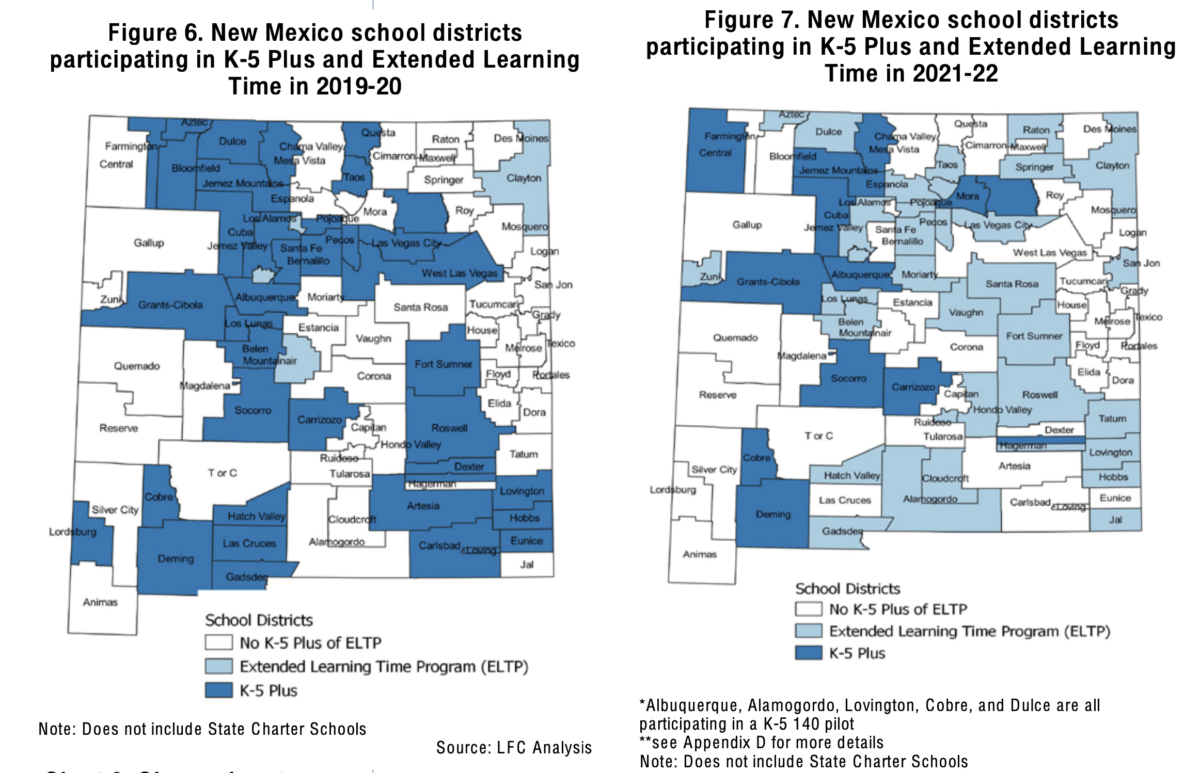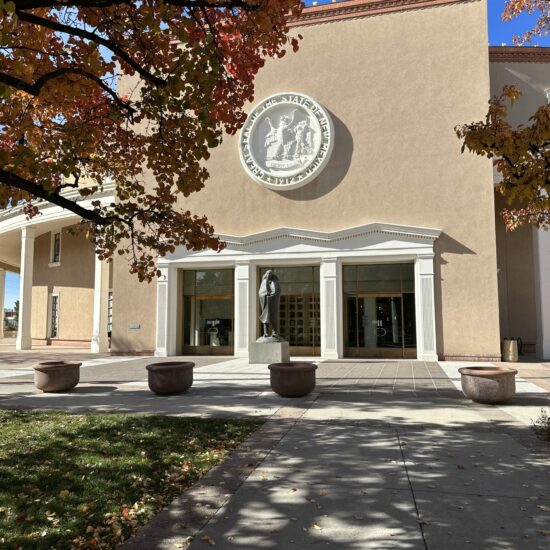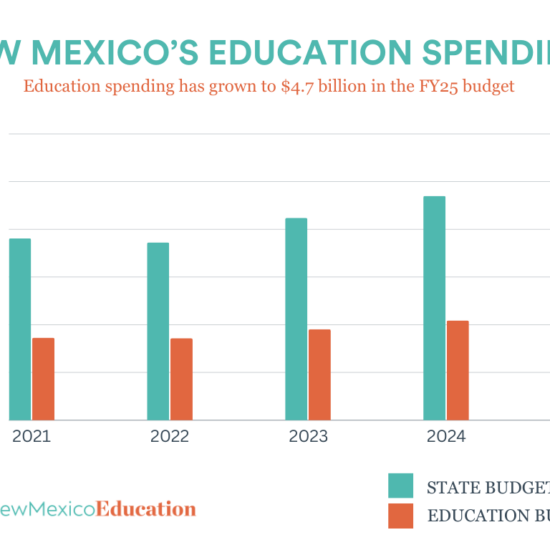
The Covid-19 pandemic has widened already large learning gaps in New Mexico and set the state’s most vulnerable students back even further than they were pre-pandemic, according to a report from the New Mexico Legislative Finance Committee.
To address these heightened challenges, school districts must start taking fuller advantage of the state’s K-5 Plus (25 additional days of school) and Extended Learning Time (10 additional days) programs, both of which have ample resources to address the needs, thanks to “unprecedented levels of state and federal funding made available over the course of the pandemic,” says the “Addressing Pandemic Impacts on Learning” report released last fall.
The report paints a dire picture, estimating that New Mexico’s most at-risk students, who were already at least a half-year behind in learning, lost another significant chunk of learning time because of the pandemic. That lost time ranged from 10 to 60 days, depending on the district.
“We are putting our kids in poverty at that level,” State Sen George K. Muñoz, a Democrat representing the Gallup area, said during a Legislative Finance Committee hearing in early December. “The sprinklers are on and the fire is going nuclear…A 12 percent proficiency rate in math? This is a complete and utter failure.”
Despite being faced with this daunting challenge, 43 of the state’s 89 school districts “elected not to participate in any sort of extended school year, and 14 did not provide a plan to otherwise address lost instructional time, despite being legally required to do so.”
The finance committee’s Program Evaluation Unit recommends in the report that the state legislature consider requiring districts and public charter schools to participate in the Extended Learning Time Program. Further, the report suggests, lawmakers should consider requiring adoption of the K-5 Plus programs in districts “that serve a high proportion of at-risk students or exhibit evidence of lower academic achievement.”
The reason? It will likely take “multiple years” to catch students up, given the pandemic-related learning loss that has occurred.
A survey conducted by a New Hampshire research group for the Public Education Department found that 72 percent of teachers surveyed said their students learned less during the 2020-21 school year than in a typical year.
The finance committee conducted a separate survey, which revealed that teachers found that 40 percent of their students were almost completely disengaged during remote learning. And just 6 percent of teachers reported that their students were “consistently engaged.”
National research has found that hybrid and remote learning are significantly less effective than in-person school. This is especially true for students categorized as at-risk. Despite this, and the return to in-person school in much of New Mexico, some families are choosing to keep their children remote for reasons of safety as well as convenience, the report says.
“Since research has shown that in-person learning leads to better student outcomes, the Legislature and PED should consider how to balance requiring in-person learning while providing high-quality remote learning for students who require accommodation,” the report suggests.
The report also found that districts across New Mexico have adopted differing strategies for addressing the lost learning time, potentially creating greater inequities. While the K-5 Plus and Extended Learning Time programs could help address this, some districts and teachers have been resistant.
A requirement of K-5 Plus that students stay with their existing teachers for an additional 25 days of instruction “would lead to teacher burnout and place a greater burden on small, rural districts,” the report says. “ As a result, many districts and charter schools declined to extend their school year, forgoing millions of dollars in new state funding.”
This combination of factors has led to fewer districts participating in the K-5 Plus program this year than in past years: 13 districts in the 2021-22 year, compared to 40 in 2020.







